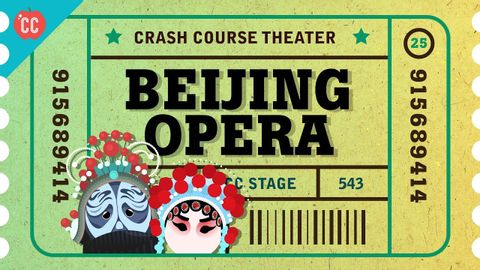
Subtitles & vocabulary
China, Zaju, and Beijing Opera: Crash Course Theater #25
00
Pei-Yi Lin posted on 2018/08/21Save
Video vocabulary
stuff
US /stʌf/
・
UK /stʌf/
- Uncountable Noun
- Generic description for things, materials, objects
- Transitive Verb
- To push material inside something, with force
B1
More eventually
US /ɪˈvɛntʃuəli/
・
UK /ɪˈventʃuəli/
- Adverb
- After a long time; after many attempts; in the end
- At some later time; in the future
A2
More bunch
US /bʌntʃ/
・
UK /bʌntʃ/
- Noun (Countable/Uncountable)
- A group of things of the same kind
- A group of people.
- Transitive Verb
- To group people or things closely together
B1
More elaborate
US /ɪˈlæbəret/
・
UK /ɪ'læbəreɪt/
- Verb (Transitive/Intransitive)
- To explain something in detail
- To be made or explained with great care/in detail
- Adjective
- Made or done with great care or in a detailed way
B2TOEIC
More Use Energy
Unlock All Vocabulary
Unlock pronunciation, explanations, and filters
